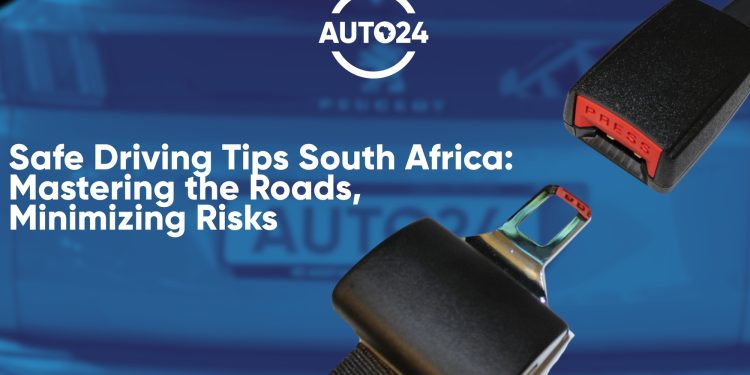Driving in South Africa – Beautiful, but Not Without Risk
From coastal highways to busy urban streets, driving in South Africa is an experience as diverse as its landscape. But with that diversity comes risk—road fatalities remain high, infrastructure can be inconsistent, and reckless driving habits abound.
Whether you’re a new driver or a seasoned one, sharpening your safety skills isn’t optional—it’s essential. In this guide, we break down actionable driving tips specifically tailored to South African roads and driving culture.
1. Know the Law and Keep Left
South Africa follows the left-hand driving system. That might be obvious to locals, but with increasing international drivers and tourists, it’s worth emphasising.
Other key rules include:
- Seatbelts: Mandatory for all occupants.
- Cellphone use: Only permitted hands-free.
- Speed limits: Vary by area. 60km/h in cities, 100km/h on open roads, 120km/h on highways.
- Drinking and driving: Blood alcohol limit is 0.05g per 100ml—about one unit per hour.
Stay informed about local laws—they may change depending on province or road type.
2. Adjust to Road Conditions
Road quality varies dramatically in South Africa. You’ll find newly tarred roads alongside pothole-ridden stretches, especially in rural and peri-urban zones.
Tips:
- Slow down when visibility is poor or road conditions are questionable.
- Avoid tailgating—keep a safe following distance.
- Use headlights early in low light or fog.
- Don’t swerve suddenly to avoid potholes—brake gradually instead.
3. Watch Out for Wildlife and Livestock
In rural areas, animals on the road are common—and collisions can be deadly.
Stay alert for:
- Cattle and goats, particularly around dawn and dusk.
- Wildlife in game park regions.
- Monkeys or baboons near forested areas.
If you spot an animal:
- Reduce speed gradually.
- Use your horn cautiously.
- Never attempt to swerve sharply.
4. Be Ready for Minibus Taxis and Erratic Drivers
Minibus taxis are a vital part of SA’s transport system—but they’re known for aggressive and unpredictable driving.
Tips for dealing with them:
- Expect sudden stops.
- Watch for illegal U-turns or unexpected lane changes.
- Don’t engage in road rage.
Patience and awareness are key.
5. Stay Secure: Carjacking and Theft Awareness
South Africa has a high rate of vehicle crime. Reduce your risk with these steps:
- Always lock your doors while driving.
- Keep valuables out of sight.
- Avoid stopping in isolated areas.
- Be cautious at intersections—especially at night.
- If followed, drive to a well-lit area or police station.
6. Prepare for Load Shedding and Power Cuts
Load shedding can affect traffic lights, causing confusion and congestion.
When approaching intersections with no power:
- Treat it as a four-way stop.
- Yield to the right.
- Proceed cautiously and expect delays.
Waze or Google Maps can help avoid congested zones.
7. Use Technology to Your Advantage
Navigation and safety apps can greatly enhance your driving experience:
- Waze: Real-time traffic and road hazard updates.
- Namola: Panic button and emergency support.
- Cartrack or Tracker: Vehicle monitoring and recovery.
- Drive monitoring apps: To assess and improve driving behaviour.
8. Vehicle Maintenance Is Part of Safety
Driving safely isn’t just about behaviour—it’s also about the condition of your vehicle:
- Check tyre pressure and tread depth regularly.
- Test headlights, brake lights, and indicators.
- Inspect brakes and fluid levels monthly.
- Service your vehicle as per the manufacturer’s schedule.
A well-maintained car is far less likely to fail you when it matters most.
9. Defensive Driving Saves Lives
Defensive driving is about anticipating potential hazards, not reacting to them. This mindset can dramatically reduce your risk on the road.
Principles include:
- Keep a 3–5 second following distance.
- Assume others may break the rules.
- Check mirrors frequently.
- Use indicators—even if others don’t.
- Avoid driving when fatigued or emotionally upset.
10. Adjust Your Driving for Weather Conditions
South Africa experiences a variety of weather extremes:
- Rain: Reduce speed and avoid hydroplaning.
- Fog: Use low beams, not brights.
- High heat: Watch coolant levels and tyre pressure.
- Dust storms: Slow down and pull over if visibility drops below 100m.
Always check weather forecasts before a long trip.
11. Understand Local Driving Culture
South African roads often operate under both formal laws and informal driving habits:
- Flashing hazards to say “thank you.”
- Right of way sometimes negotiated with eye contact.
- Flashing brights as a courtesy warning.
While it’s important to obey the law, understanding these norms helps navigate the roads safely.
12. Know What to Do in an Emergency
If you’re in a crash or breakdown:
- Move the car out of traffic if possible.
- Turn on hazards.
- Call emergency services: 112 from any cellphone.
- Report incidents to police, especially if injuries or third parties are involved.
- Keep emergency numbers written down as backup.
Conclusion: Drive Smart, Stay Safe
Driving in South Africa can be breathtaking—but also dangerous if you’re not vigilant. With high road fatality rates and unique risks ranging from wildlife to power outages, proactive and defensive driving is a must.
By mastering these safety tips, you don’t just protect yourself—you help build a safer road culture for everyone.





